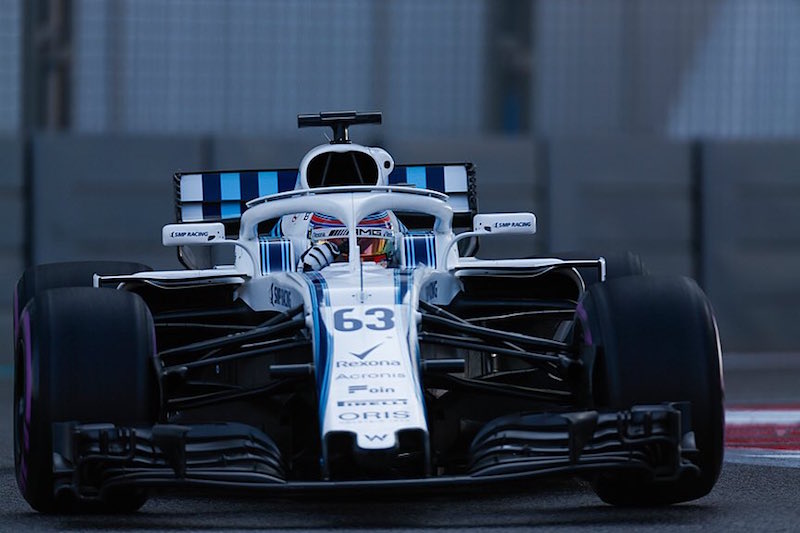
It was fitting that the news came on the Friday of the final weekend of the Formula 3 European Championship as we know it. Over its six years under the FIA’s full stewardship, the series shone a spotlight on many a superstar youngster: Esteban Ocon, Max Verstappen, Charles Leclerc and Lando Norris, to name just four. But such has been the category’s depth, it has also produced many who have gone onto greater heights despite not standing out as absolute megastars at the time. New Williams signing George Russell is one such driver.
Strangely, his two-year F3 stint can be seen as both the making of his career but also something that almost broke it. His failure to make the same kind of headline-making impact as those named above has constantly led many to dismiss him as being a serious prospect. Yet it was the ability he displayed out of the spotlight in those two seasons that earned him the support of Mercedes that has since been crucial to changing so many of those opinions.
Of course, there were many key moments in Russell’s route to F1 before then. It was the rare achievement of back-to-back European junior karting titles that first truly got him onto the radar, prompting Formula Scout to rank him as the third most promising karter of the moment, behind Leclerc and Verstappen. A few months younger than those two, Russell moved into single-seaters at the same time, soon after his 16th birthday, in BRDC Formula 4.
Big things were expected, and Russell wasted little time stamping his authority on the series. One of those to get a very early glimpse of his potential behind the wheel of a single-seater was Joey Foster in his role as driver coach for the Lanan Racing outfit. Foster was impressed “from the very beginning”.
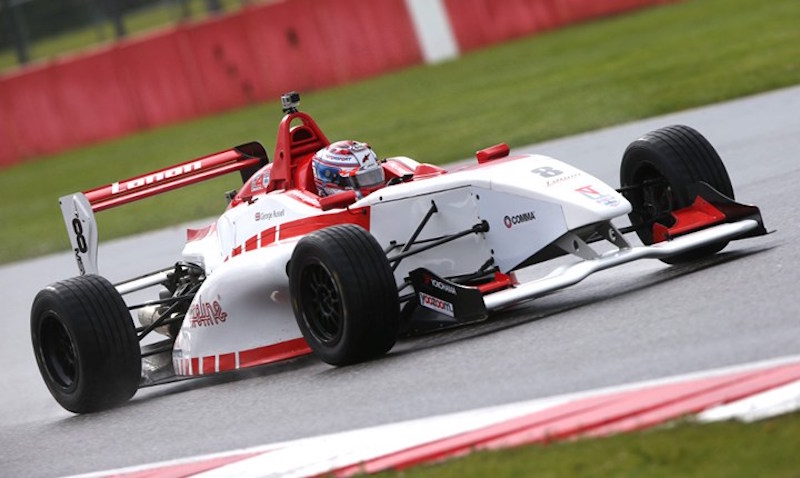
“It was just a general test at Oulton Park,” says Foster. “Quite early in the morning – I remember it being quite a cold day – he left the pits with a lot of confidence. I remember being impressed by his confidence straight away.
“Obviously he did very well in karting, but sometimes it’s that transition when you go from karting to cars [that is difficult]. It was just the way he left the pits and took control of the car. It was never the car driving him, it was always him driving the car. Usually when you see drivers starting off, they take a while before they can take charge of it and really just make it do what they want. But George was there from the very beginning.
“He came back in, I had a look at the data, and straight away as well he had the braking traces [under control]. I think that needed sharpening up a little bit, but it was pretty much there. Straight from the off. So I thought: he knows what he’s doing, he’s done his research.”
Russell’s intelligence and maturity quickly became as noticeable traits as his outright speed. Nonetheless, that rookie season would turn out to be far from plain sailing. In the second half of the year his pace dropped off (attributed to the after-effects of a mid-season bout of chickenpox), so much so that unheralded team-mate Arjun Maini moved past to lead the standings into the deciding round. But even when the first race of the final round went against him, Russell rallied to claim the title in an early demonstration of his mental fortitude.
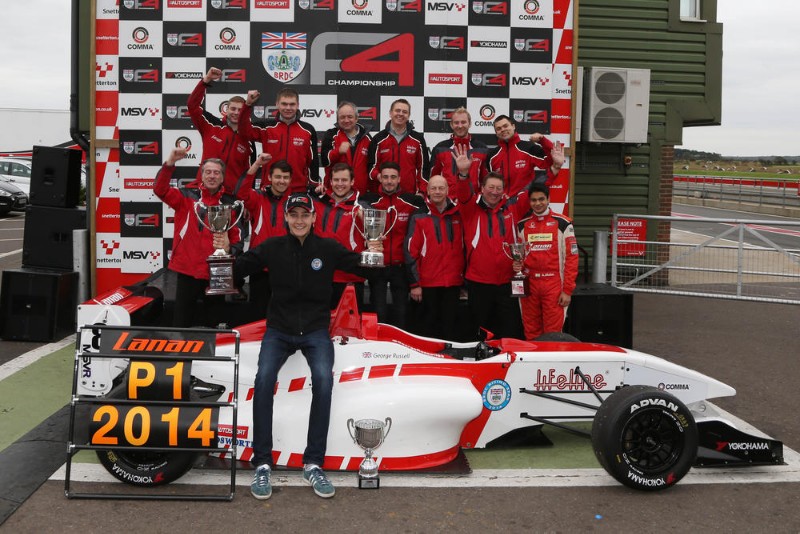
Impressing both in and out of the car was key to his subsequent win in the McLaren Autosport BRDC Award, where he was the youngest ever finalist and up against tough competition that included Ben Barnicoat and Alex Albon. Another key moment at the end of that year was winning on a Formula Renault Eurocup one-off with Tech 1 Racing at Jerez, having gone through a relatively lacklustre parallel campaign in the Alps series with Koiranen.
Those two events combined to convince Russell to step up to European F3 for 2015 rather than spend a full year in the Eurocup as originally planned. He immediately proved up to the task, winning on his debut weekend at Silverstone, just as Leclerc was doing exactly the same.
Surprisingly, that would be his only win of the season. Qualifying was a struggle, but he impressed in other ways, with excellent racecraft and an ability to charge forward while at the same time avoiding contact. He didn’t fail to finish until he was taken out in race 33 of 33, quite a feat in a season and a field that was widely lambasted for poor driving standards.
It wasn’t just luck or coincidence, but down to a style and feel that was leading to increasing comparisons with Jenson Button, something Foster also sees.
“There’s the Jenson Button style, which is very smooth, and can work well in tricky conditions and wet weather,” Foster says. “And when the car’s really hooked up on a dry day he can be bloody fast and untouchable. You see Fernando Alonso and Lewis Hamilton where they have the car more on the nose, and the thing sort of reacts. They brake later into the corner, the thing rotates well, they jump on the power and they’re out of there. And he’s kind of got a mix of both, which is quite rare to see.
“He can be smooth and keep it fast, but when he needs to be he can have the thing with an aggressive set-up and still make it work.”
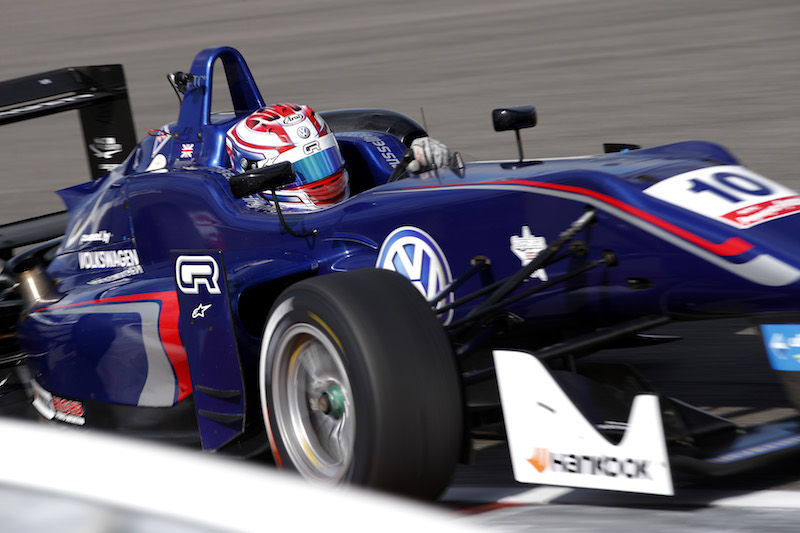
For his second season in F3, Russell switched from Carlin to new team Hitech: a move that seemed like a calculated risk that could give him the best chance of taking on an increasingly well-resourced Prema team with Lance Stroll. In the end, the ultimate performance to truly battle for the title was lacking, and Russell won only twice. Still, he was the top non-Prema driver in the standings, in third.
It took until the end of the year, but Russell did take the opportunity to prove his talent in perhaps the greatest test of it: qualifying at the Macau Grand Prix. He was making his debut on the famed street circuit, with the politics of his move from Carlin to Hitech having kept him away 12 months before. As rain began to fall in the dying minutes of qualifying, Russell produced a stunning lap to snatch pole position. In the races he slipped back, but he had made his mark.
That weekend could easily have been Russell’s last in a single-seater. He had been lacking the personal funds to continue, and had at one stage been looking towards a future in the DTM. However, in joining Hitech as one of Mercedes’ factory-supported F3 drivers, he saw an opportunity.
“I had quite a good link with BMW,” Russell explains during a conversation with Formula Scout last year. “I did the DTM test at the end of 2015, which went extremely well, and I had a contract on the table. But when I knew there was a small potential deal with Mercedes for the F3 side, I knew what that could lead do, and I had good confidence that I could have a good year with Hitech. So I thought I want to stay loyal to Mercedes and see where that takes me.”
The gamble paid off. During 2016 Russell was invited to an assessment over two days on the Mercedes simulator, where he impressed enough to be asked back to support the F1 team with its development work and ultimately offered a place on its young driver programme. Key to that process was Gwen Lagrue, who had become Mercedes’ driver development guru after guiding Esteban Ocon up the ranks in his previous role with the Gravity management project, and had observed Russell in the F3 paddock in 2015 while in attendance with rival Alex Albon (who he has continued to mentor independently).

From Macau, Russell headed to Abu Dhabi to link up with the all-conquering ART Grand Prix GP3 team: a prized seat that would never have been possible without Mercedes support. It came with the pressure however of having to try and match Ocon’s feat of winning the title at the first attempt.
Despite the status of pre-season favourite, Russell trailed his team-mates at the opening round in Barcelona, particularly after struggling to get the car off the line. However, he made the most of a subsequent in-season test at the Hungaroring to work on his weaknesses, and won the next two Saturday races at the Red Bull Ring and Silverstone to take control of the title race.
In addition to providing him with a top car, the Mercedes patronage was helping Russell in other ways too in terms of preparing for each race weekend. “The simulator is so realistic it’s almost as though I’m driving each circuit every day and getting lots of laps under my belt,” he said. “Working on my feedback, working on knowing what the engineers want to hear, what’s important for them, what’s not, and also learning about the Pirelli tyres which is also a key to GP3, F2 and Formula 1.”
Russell bounced back from a mechanically-induced non-scoring weekend at the Hungaroring to win again at Spa and Monza, and sealed the GP3 title a round early at Jerez thanks to some punchy overtaking moves that demonstrated not only his racecraft, but also an increasing confidence.
Having the championship secured allowed Russell to get his first F1 practice runs before the season was out, with Force India in Brazil and Abu Dhabi. Having not had the chance to try the team’s car beforehand, Russell made a significant impression, setting the 12th and 11th best times respectively. Perhaps the most impressive thing was jumping straight from the F1 car to his GP3 machine in Abu Dhabi and claiming his most dominant pole position of the season: a transition that predecessor Leclerc had admitted to finding difficult 12 months earlier.

Moving up to F2 put Russell head-to-head with the much greater hyped Norris, with everybody starting with a blank sheet of paper in a brand new car. The first signs in the opening race in Bahrain weren’t positive, with Norris dominating and Russell some way back in fifth. But just as in 2017, he quickly found ways to improve – in this case there was no test, but he made the most of the track time after stalling and rejoining a lap down in the sprint race to learn as much as he could.
Come next time out in Baku he was already on top. He would have won the feature race had he not been taken out by Nyck de Vries, and then won the sprint race from 12th on the grid. He went on to exert his superiority over the early part of the summer, winning the feature races at Barcelona, Paul Ricard and the Red Bull Ring, and would have had another at Silverstone without a slow pit-stop. An incredible drive through the order to second in the Austrian sprint race had been enough to take the points lead, and he repeated the performance a week later at home.
More mechanical issues at the Hungaroring threatened his lead, but he continued to extend it thereafter, further demonstrating his completeness along the way. He scored well at Spa on probably his weakest weekend for pace, and took opportunistic sprint race wins at Monza and in Sochi. He sealed the title in fitting style in Abu Dhabi, taking control of his strategy to set himself up for victory.
By now, Russell’s future was known. For a while, it had looked as though he could have missed out in a turbulent F1 silly season, but Williams had identified him as its ideal driver.
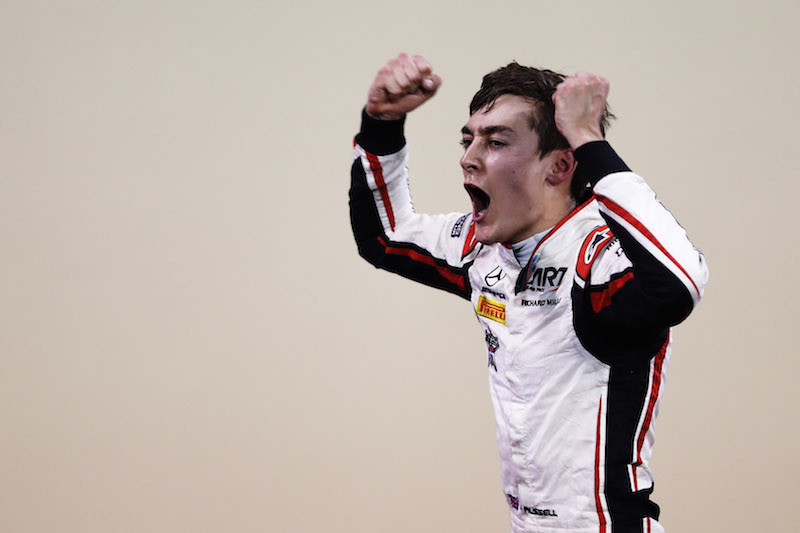
Photo: Zak Mauger / FIA Formula 2
After the past two seasons in particular, there can be little doubting Russell’s ability to do the job behind the wheel. With his back-to-back GP3 and F2 titles he has emulated Leclerc, and although he might not quite have the same level of prodigious talent, he has shown he is capable of devastating speed, stunning racecraft and intelligent race management.
He might be lacking competitive F1 experience, but Williams can take confidence from those Force India outings and his record-breaking pace in the Mercedes W09 at the Hungaroring test in the summer to know that he should have little trouble in adapting.
There are other things that Russell can bring to Williams though, particularly in the team’s current situation of needing to lift itself off the back of the F1 grid. It’s common logic that such a team requires experienced drivers, but Russell has a set of attributes to equal or even outweigh such experience.
Crucial to earning the Mercedes backing that has got him to this point was his work on its simulator: providing the right feedback and helping drive setup and car development in the right direction. There’s evidence from his racing of his strength in this area too. After all, he didn’t simply inherit a fast F2 car this year. Leading the new Hitech team, at a time when development in F3 was more open, will only have helped add to his experience in that regard.
Backing up Russell’s engineering nous will be his personal traits: his constant drive to improve, work ethic and commitment to making things happen. The stories of Powerpoint presentations and phonecalls to Paddy Lowe are well-told but indicative of how he went out and made his drive a reality, rather than expecting somebody else to do the work.
As much as anything, Russell’s presence at Williams will be motivating for all around. They need only need look at what Sauber has achieved in 2018 with Leclerc to see what’s possible with a fast, hungry and personable young driver leading the line, getting the most out of his equipment. It wouldn’t be a surprise to see the ideal combination of Russell and Williams making similar strides next season.
Joey Foster interview by Elliot Wood
